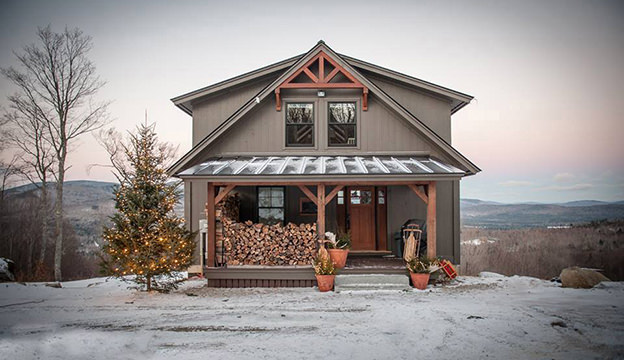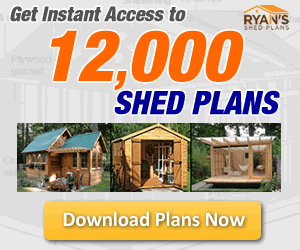Small Pole Barn Homes Revolutionizing Spaces
Small Pole Barn Homes: Your Guide to Cozy Living
Pole barn homes have always been a testament to rustic charm and practical design. Initially conceived to store farm equipment and livestock, these structures have transformed over the years, merging functionality with modern living aesthetics. Today, they’re not just about expansive spaces; a rising trend is capturing hearts and imaginations: the small pole barn home. As urban areas become crowded and the allure of minimalistic living grows, these compact homes offer a refreshing take on sustainable living without compromising style or comfort.
The Rise of Small Pole Barn Homes
History of Pole Barns
Pole barns have been an iconic part of rural landscapes for decades, with their sturdy posts anchored deep in the ground. Traditionally, these structures served as shelters for livestock, grain storage, or garages. The simplicity of their design, rooted in functionality, made them a staple on farms. However, as time evolved, so did the pole barn. Architects and homeowners began to see potential beyond its utilitarian roots. Today, these barns are for more than just storing hay or tractors. They’ve been reimagined and transformed into modern, comfortable living spaces, fusing the rustic allure of the past with contemporary design elements.
Benefits of Downsizing
Moving towards smaller pole barn homes is not just a design trend but a lifestyle choice.
- Cost: Building a compact home requires fewer materials, translating to significant savings.
- Speed: Smaller spaces mean quicker construction times, allowing homeowners to move in faster.
- Maintenance: With less square footage, upkeep becomes a breeze. Reduced utility bills, fewer repairs, and a smaller ecological footprint make these homes attractive for those looking to simplify without sacrificing quality.
Features of Small Pole Barn Homes
Structural Benefits
One of the standout aspects of small pole barn homes lies in their structural integrity and adaptability:
- Durability: These homes are built to last. The foundational poles are deeply anchored into the ground, providing a stable and robust frame. This unique design offers resistance to various environmental factors, from strong winds to heavy snow loads, ensuring a safe and lasting dwelling for its inhabitants.
- Design Flexibility: The post-frame construction of pole barn homes offers vast open spaces without needing load-bearing walls. It means homeowners can customize the layout, whether they desire an open-concept living area, a lofted bedroom, or a wrap-around porch. The possibilities are nearly endless.
- Eco-friendly Aspects: Small pole barn homes often incorporate sustainable materials. From recycled wood to metal roofs that reflect heat, these homes are designed with the environment in mind. Their compact size also means reduced energy consumption, making them an excellent choice for those looking to minimize their carbon footprint.
Interior Design Possibilities
Stepping inside a small pole barn home reveals a world of design potential:
- Maximizing Space: Efficient design is at the heart of these homes. Clever storage solutions, multi-purpose furniture, and open floor plans ensure every inch is utilized fully.
- Popular Decor Styles: The inherent rustic charm of pole barns lends itself to various design aesthetics. From farmhouse chic with its warm woods and antique accents to a more modern approach with sleek lines and industrial finishes, there’s a style to resonate with every homeowner’s vision.
Building Your Own Small Pole Barn Home
Choosing the Right Location
The foundation of a perfect pole barn home begins even before the first pole is planted—it starts with selecting the right piece of land. Here are a few key considerations:
- Land Characteristics: Not all plots are created equal. It’s crucial to assess the soil quality, drainage, and topography. These factors can influence the stability of your structure and affect long-term maintenance.
- Zoning and Permits: Ensure the land is zoned for residential purposes before breaking ground. It’s also essential to obtain the necessary permits to avoid legal complications.
- Energy-Efficient Orientation: Smart positioning of your home can significantly affect energy consumption. Orienting the house to take advantage of natural sunlight can reduce heating costs in the winter and keep the home cooler in the summer.
The Building Process
Building a pole barn home is a journey, and here’s a brief roadmap:
- Laying the Foundation: Unlike traditional homes, pole barn homes don’t require a deep foundation. However, they do need a level ground and sturdy poles anchored securely.
- Erecting the Poles and Framing: Once the foundation is set, poles are erected and anchored deep into the ground. These poles are the primary support structure upon which the roof and walls will be mounted.
- Adding Walls, Insulation, and Roofing: With the frame in place, walls are added, followed by insulation, to ensure energy efficiency. The roofing comes next, sealing off the structure and protecting against the elements.
Customization Options
Your pole barn home should be a reflection of your style and personality:
- Exterior Finishes: From classic wooden sidings to modern metal sheaths, there’s a range of options to give your home its unique look.
- Interior Layout: Thanks to the open-frame construction, you can design the interior layout to your liking. Whether you want a cozy loft, a spacious living area, or an expansive kitchen, the choice is yours.
- Decor and Furnishings: The finishing touches bring your vision to life. Choose fixtures, furnishings, and decor that resonate with your aesthetic, turning your pole barn house into a home.
Cost Considerations
Budgeting for Your Home
Building a small pole barn home can be a cost-effective endeavor, but like all construction projects, it’s essential to budget wisely:
- Estimation: Begin with a detailed estimate. It should include costs for land (if not already owned), materials, labor, permits, and utilities setup. Working with an experienced builder or contractor can help you get a realistic figure.
- Unexpected Expenses: In construction, it’s a rule of thumb to set aside an additional 10-20% of your estimated budget for unforeseen costs. Whether it’s a sudden price hike in materials, unexpected groundwork, or design alterations, it’s always better to be prepared.
Financing Options
While building a pole barn home can be more economical than traditional homes, financing is often still a necessity:
- Traditional Mortgages: Depending on your credit score, employment history, and down payment, you might qualify for a conventional home loan. Remember, lenders often want to see approved plans and permits before granting a mortgage for construction.
- Construction Loans: These are short-term loans covering the construction phase. Once the home is built, it can be converted into a standard mortgage.
- Grants and Incentives: Some regions offer subsidies or tax incentives for sustainable or energy-efficient buildings. Investigate local and federal programs that help reduce your out-of-pocket costs.
Remember, shopping around and consulting with financial experts is crucial to find the best financing option tailored to your needs.
Living in a Small Pole Barn Home
The Experience
Living in a small pole barn home is more than just a change of address—it’s a shift in lifestyle, a step towards embracing simplicity and authenticity. The open spaces, characterized by exposed beams and rustic aesthetics, evoke a sense of warmth and coziness. It is minimalism without the sacrifice, where every corner is thoughtfully designed, every nook a testament to the efficient use of space. The large windows in these homes bridge the gap between the indoors and the vast expanses outside, letting in abundant natural light and offering breathtaking views. It’s a life where you’re constantly reminded of nature’s beauty, the lines between the inside and the outside blur, and every day feels like a retreat.
Maintenance and Upkeep
A key advantage of small pole barn homes is their relative ease of maintenance. Routine checks and repairs are straightforward, with fewer square feet to look after and robust construction. Inspecting the roofing, especially after harsh weather conditions, is essential to ensure that the exterior finish remains in good shape to protect against the elements. Regularly cleaning and treating any wooden elements can also prolong their lifespan. With some proactive care, these homes can remain a sanctuary for generations.
Community and Lifestyle
Being a pole barn homeowner often means being part of a unique, close-knit community. There’s a shared sense of pride and camaraderie, whether in online forums, local groups, or neighborhood gatherings. These communities are invaluable, offering tips, sharing experiences, and celebrating the joys of living in such distinctive homes. It’s a lifestyle choice that resonates with those who value authenticity, connection, and a touch of the unconventional.
FAQs about Small Pole Barn Homes
Owning a pole barn home is a unique experience, and naturally, it comes with its own set of questions. Let’s address some of the most common concerns and inquiries potential homeowners have:
1. How durable are pole barn homes in extreme weather?
Pole barn homes are designed with durability in mind. Their deep-set poles provide stability against strong winds, while their robust construction can handle heavy snow loads. However, it’s essential to ensure proper sealing and insulation to protect against moisture and temperature fluctuations.
2. Is insulation a concern in pole barn homes?
Not at all! While the original barn structures were often less insulated, modern pole barn homes can be as well-insulated as any traditional home. These homes can be energy-efficient and comfortable year-round with high-quality insulation materials and techniques.
3. What’s the average cost per square foot to build a pole barn home?
The cost can vary based on location, materials, and customization. On average, pole barn homes can range from $50 to $100 per square foot, but this can fluctuate based on the factors mentioned. Getting a detailed estimate from a builder in your area is always best.
4. Can I expand my small pole barn home in the future?
Absolutely! One of the advantages of pole barn homes is their flexibility in design. If you own the land and secure the necessary permits, expanding your home, whether adding rooms or extending living areas, is entirely feasible.
5. Are pole barn homes energy-efficient?
Yes, with the right design elements, they can be. The home’s energy efficiency affects its orientation, window placement, insulation quality, and roofing material. Many homeowners also integrate sustainable technologies like solar panels to enhance efficiency further.
6. Can I have a basement in a pole barn home?
While pole barn homes typically don’t have basements due to their post-frame construction, it’s not impossible. If a basement is a must-have, it will require additional excavation and foundation work. Discussing this with your builder early in the planning stage is crucial.
Considering a pole barn home is an exciting venture, and it’s natural to have questions. Always consult with professionals and other homeowners in the community to get a comprehensive understanding and make informed decisions.
Conclusion
As we’ve journeyed through the intricacies of small pole barn homes, their appeal becomes undeniably evident. With their rustic charm interwoven with modern design elements, these homes offer an oasis of simplicity in a complex world.
Beyond just being a structure, these homes embody a philosophy—a step back to embrace the essentials, a nod to sustainable living, and a celebration of space optimization. They stand as a testament to how we can merge the old with the new, taking time-tested construction methods and adapting them to contemporary needs.
But the most significant draw is the sense of community and the lifestyle they promote. Owning a pole barn home is part of a unique fraternity that values authenticity, connection, and a touch of the unconventional. It’s about deliberately prioritizing the quality of life, finding joy in the little things, and creating a haven reflecting one’s true self.
For those contemplating a shift from the hustle and bustle of urban sprawls or the monotony of cookie-cutter houses, small pole barn homes beckon with a promise of something different, something genuine. And as more people discover their allure, it’s clear that these homes are more than just a fleeting trend—they’re a movement towards a more grounded, fulfilling way of life.



